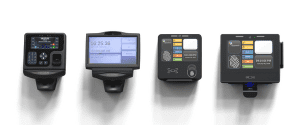Over the last few years, we’ve seen the convergence of two leading trends in the enterprise technology world – cloud computing and service models such as SaaS, IaaS, and others. The move to cloud infrastructure was well underway before 2020. Still, it’s fair to say that the pandemic acted as a jumping-off point for businesses which, almost overnight, were tasked with keeping distributed workforces connected and productive.
Cloud services offered the ideal solution for this sudden shift, enabling employees to access critical applications, data, and collaboration tools from anywhere, regardless of physical location. A 2022 report from Statista found that 93% of businesses across Europe, the Middle East, and Africa accelerated their move to the cloud because of the pandemic.
Why has the service model become so popular?
In addition to flexibility, the rapid adoption of cloud services has enabled businesses to make significant cost savings and offered flexibility that legacy infrastructure cannot. By leveraging cloud infrastructure, enterprises avoid the high upfront costs of building and maintaining their physical data centers. Instead, they can rely on cloud service providers to handle the hardware, networking, and storage infrastructure, paying only for the resources they use.
This shift from a capital expenditure (CapEx) model to an operational expenditure (OpEx) model allows businesses to allocate resources more efficiently and scale up or down as demand fluctuates – a real plus point in these economically uncertain times. This agility has enabled enterprises to be far more responsive to market dynamics, handle spikes in user traffic, and launch new products or services more rapidly.
All of which is to say we’ve seen a marked shift to the services model, where businesses pay a regular fee – monthly, quarterly, or annually – to access services. It is in marked contrast to the previously dominant licensing model, where businesses paid for applications that lived on their own computers or servers. It is a generational change, with businesses swapping out complete ownership of their software for the reliability and security of cloud-based services.
What are some of the most popular types of services delivered by cloud infrastructure?
Software as a Service (SaaS): This has emerged as the dominant service model within cloud computing. Think of your word processing client, your spreadsheets, your video calling platform – all are forms of SaaS that have taken the place of on-premises installations that require routine maintenance. SaaS providers handle all the backend infrastructure, updates, and security, enabling organizations to focus on their core operations.
Infrastructure as a Service (IaaS): This has also gained real traction due to the cloud revolution. IaaS provides businesses with virtualized computing resources on-demand, including servers, storage, and networking components. The flexibility allows organizations to rapidly scale infrastructure up or down based on their requirements, avoiding the need for substantial capital investments in physical hardware.
Platform as a Service (PaaS): This service gives developers and organizations a development environment that lives in the cloud, allowing them to build, deploy, and manage applications. By utilizing PaaS, businesses can shift their focus from managing infrastructure and runtime environments to concentrating on application development and innovation. PaaS providers handle the underlying infrastructure, including servers, storage, networking, and the runtime environment, freeing developers from the burden of infrastructure management.
How are cloud services being used in the workforce management sector?
As with all industry sectors, the emergence of service models on cloud infrastructure has offered several advantages to businesses. As an adaptable and forward-thinking business, GT Clocks has quickly adapted and improved its products and services to reflect this new environment.
At the heart of our GT Services offering is our cloud platform, which enables customers to manage and support their workforce management devices, wherever they are in the world. When you sign up for GT Services, you and your clients gain access to GT Connect and the following powerful features:
Device Management
Our comprehensive management platform allows you to remotely diagnose, recover, and update devices with ease. Whether managing devices individually or in groups, you can push out updates and configurations effortlessly, simplifying device maintenance with just a click of a button.
Data Management
Our innovative architecture allows you to connect with your chosen HCM provider with ease. All data transmitted to and from the devices is securely transferred and transformed through a single connection. This ensures a smooth and efficient system, empowering you to make real-time business decisions based on accurate data when you need it most.
Identity Management
The combination of our platform and state-of-the-art devices prioritizes the security of Personally Identifiable Information (PII), including biometric data. From the moment of collection, all PII is encrypted and protected, ensuring utmost confidentiality. GT Connect goes the extra mile by facilitating compliance with US and international data legislation. It records consent for PII collection, provides tools for information requests, and offers a secure process for PII erasure, significantly reducing the risk of fines and litigation for your business.
What are the benefits of GT Services?
Lower Costs: GT Services helps decrease the total cost of ownership for your devices. This includes lower hardware costs due to the reliability and longevity of GT devices, backed by GTProtect’s subscription warranty.
Compliance and Integration: Additionally, GTConnect ensures compliance with data protection laws, reducing administrative and legal costs. The simplified integration approach saves development and operational costs, as GTConnect manages device connections and data transfer via a single connection.
Minimal Downtime: With an experienced support team and the option for next-day hardware delivery, GT Services minimize downtime and disruptions for your clients, ensuring smooth operations.
Increased Efficiency: GTConnect enables centralized management of your device estate, facilitating efficient configuration and updates. This reduces the need for onsite engineering and support visits, leading to cost savings and improved operational efficiency. To discover more about our solutions, click here.






